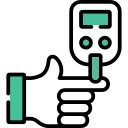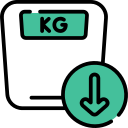Q. What are the techniques used in facial injections?
Doctor Answer is medically reviewed by SecondMedic medical review team.
Facial injections are a common cosmetic procedure used to address various concerns like wrinkles, fine lines, volume loss, and asymmetry. There are several techniques used in facial injections, each serving different purposes and targeting specific areas of the face. Here's a breakdown of some common techniques:
1. Dermal Fillers: Dermal fillers are injectable substances used to add volume, contour, and smooth out facial wrinkles and folds. They are typically made from hyaluronic acid, collagen, or calcium hydroxylapatite. The injection technique involves carefully injecting the filler into specific areas of the face to achieve the desired results. This can include filling in lines around the mouth, plumping up the lips, or restoring volume to the cheeks.
2. Botulinum Toxin (Botox) Injections: Botulinum toxin injections, commonly known as Botox, are used to temporarily paralyze facial muscles, reducing the appearance of wrinkles and fine lines caused by facial expressions. The injections are administered with a fine needle into targeted muscles, such as those responsible for frown lines between the eyebrows or crow's feet around the eyes. The toxin blocks signals from the nerves to the muscles, causing them to relax and soften the wrinkles.
3. Microinjections: Microinjections involve using very fine needles to inject small amounts of substances into the skin's superficial layers. This technique is often used for procedures like mesotherapy, where vitamins, minerals, and other nutrients are injected into the skin to improve hydration, texture, and overall appearance. Microinjections can also be used to deliver tiny amounts of neurotoxins or fillers for precise and subtle enhancements.
4. Cannula Technique: The cannula technique involves using a blunt-tipped cannula instead of a needle for injecting fillers. This technique is preferred by some practitioners as it can reduce the risk of bruising, swelling, and damage to blood vessels and nerves. The cannula is inserted into the skin through a small incision and guided to the treatment area, allowing for more controlled and precise placement of the filler.
5. Thread Lifts: Thread lifts are a minimally invasive alternative to traditional facelift surgery. This technique involves inserting dissolvable threads into the skin to lift and tighten sagging tissue. The threads have small cones or barbs that anchor them in place, providing immediate lifting effects. Over time, the threads stimulate collagen production, further improving skin firmness and elasticity.
6. Platelet-Rich Plasma (PRP) Injections: PRP injections involve extracting a small amount of the patient's blood, processing it to concentrate the platelets, and then injecting the platelet-rich plasma into the skin. PRP contains growth factors that promote tissue regeneration, collagen production, and skin rejuvenation. This technique is often used for facial rejuvenation, scar reduction, and hair restoration.
These are just a few of the techniques used in facial injections, and the choice of technique depends on the specific goals of the patient, the area being treated, and the preferences and expertise of the practitioner. It's essential to consult with a qualified and experienced provider to determine the most suitable treatment plan for your individual needs.











